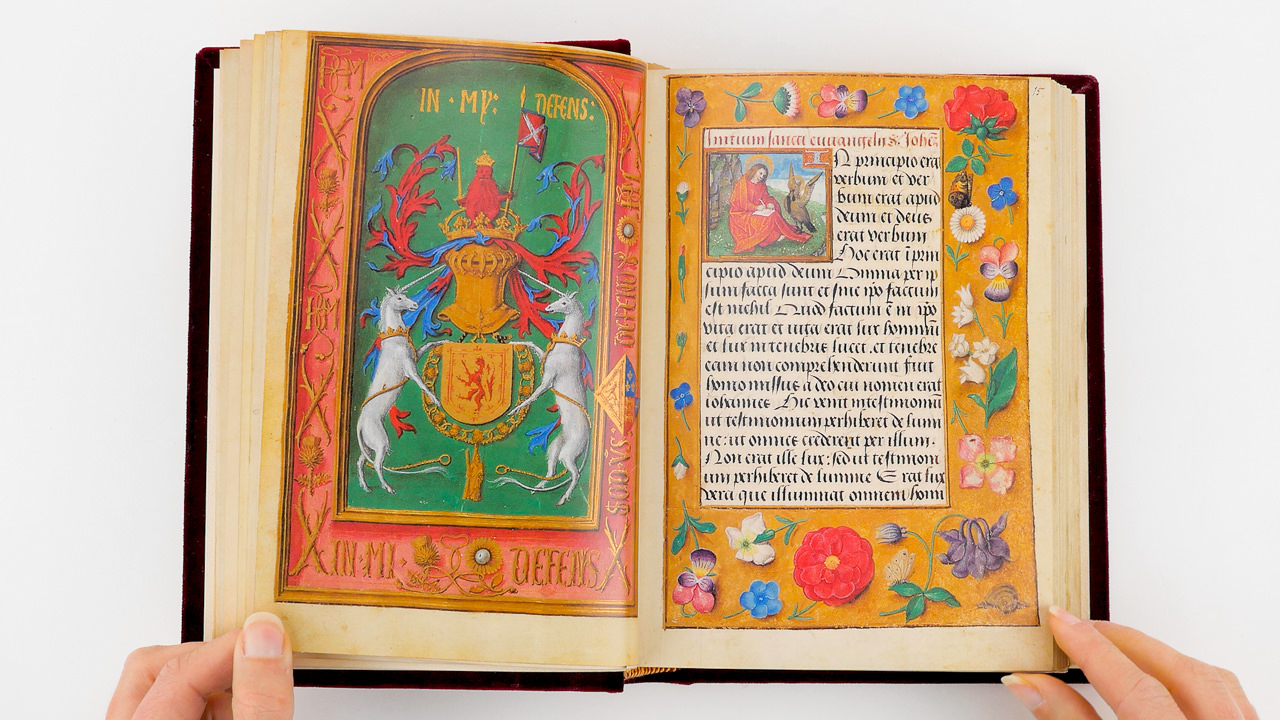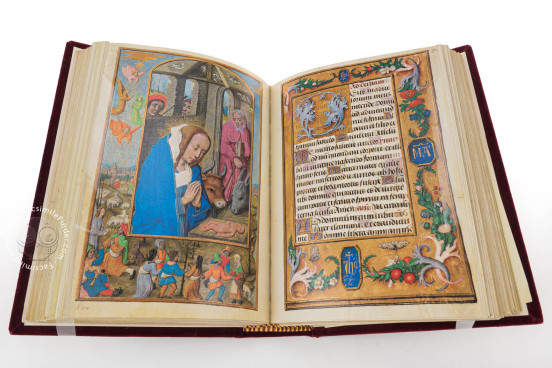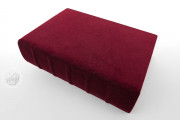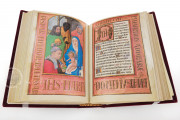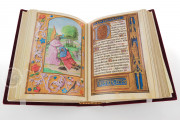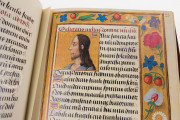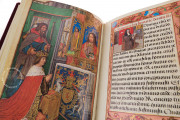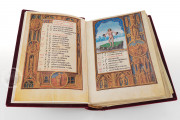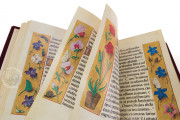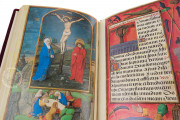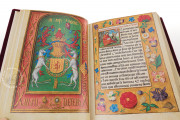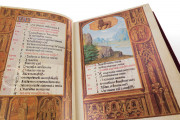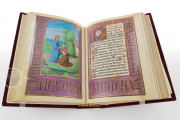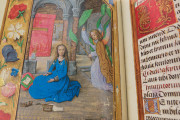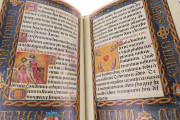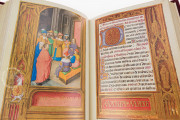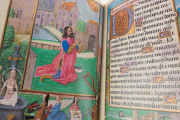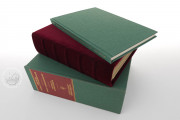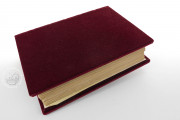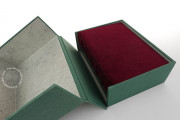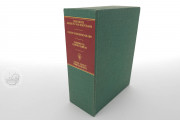The Master of James IV of Scotland, a most talented and prominent illuminator from the decades bookending the year 1500, was named after his work in this very Book of Hours. This extravagant manuscript was likely made as a gift for the king of Scotland and Margaret Tudor around the time of their 1503 wedding, and certainly prior to King James' death in 1513. The marriage marked a significant political union that was meant to ensure lasting peace between Scotland and England.
The Book of Hours of James IV contains a rather standard compilation of texts in Latin to constitute a Book of Hours. The images, however, are personalized with heraldic references to both families and remarkable portraits of the newlyweds. Sixty-five full-page miniatures fill this personal book and are used to ceremoniously announce the beginning of a new section or highlight a prominent portion.
Bold borders filled with realistic flowers (prominently featuring marguerites in honor of the English bride), creatures, elaborate architectural elements, and more frame each of these lively miniatures along with their textual counterpart across the openings. The vivid array of tempera colors is opulently highlighted with shell gold throughout, creating a masterpiece worthy of celebrating a royal union.
The Flourishing of Flemish Illumination
No one less than the leading workshops could be entrusted with the magnitude of this occasion. Named for the breathtaking portrait found on fol. 24v of King James kneeling in prayer, the eponymous Master of James IV of Scotland is now identified with Gerard Horenbout, the court painter of Margaret of Austria who was later in the service of Henry VIII.
The project, however, was far too intricate for a single painter to execute alone and is thus a collaboration by several artists, including some of the most famous names of Flemish book painting. One of these is the so-called Master of the First Prayer Book of Maximilian or Maximilian Master, who is also today identified as Alexander Bening. These two artists also collaborated on works such as the equally luxurious Rothschild Hours, renowned for also gathering the artists constituting the height of Flemish illumination.
Capitals of Gold and Silver
Featuring hundreds of ornate silver initials on gold grounds, the script is an elegant bastarda written by the scribe known as the 'Thin Descender Scribe', whose work is found in several similarly grand manuscripts from the period. Experts have identified him as Iohannes de Bomalia, a name found at the end of the prayer commemorating all saints within this manuscript.
Historical records, however, offer two people with the name Jan de Bomalia, but scholars are tending toward one who was a Dominican priest active in Bruges. Regardless of the exact attribution, the fine script contributes to the unparalleled extravagance of the manuscript.
From Mary Tudor to the Library of the Austrian Hapsburgs
Made during the ultimate blossoming of Flemish illumination, the manuscript continued in royal collections. After the death of King James IV, Margaret gave the book to her sister Mary Tudor, Queen of France. She inscribed it on fol. 188r, writing: Madame I pray your grace / Remember on me when ye / loke upon this bok / Your lofing syster / Margaret. The manuscript entered the library of the Austrian Habsburgs in Vienna by the time of Leopold I, Holy Roman Emperor in the late seventeenth century.
We have 1 facsimile edition of the manuscript "Book of Hours of James IV": Das Gebetbuch Jakobs IV. von Schottland facsimile edition, published by Akademische Druck- u. Verlagsanstalt (ADEVA), 1987
Request Info / Price
